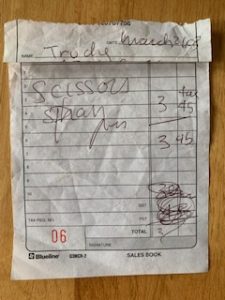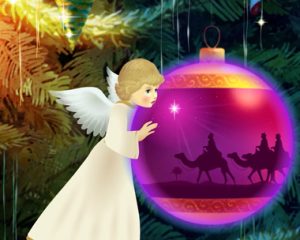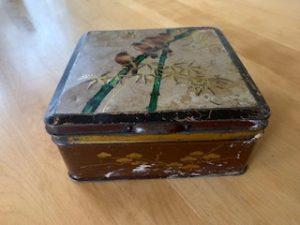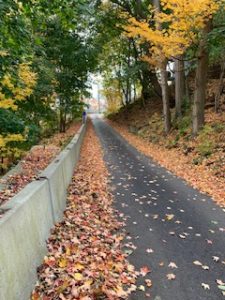
As a scatterbrained youngster, I was forever forgetting or losing things. A classmate may not have minded occasionally lending a pencil, but I was very reluctant to hit up the same person each time when I forgot mine at home . . . again. I once left a perfectly good dress in a bag on a Greyhound bus. When I see Lost and Found boxes now, it appears that I am not alone.
Just before the pandemic hit, I had a problem with the pedal on my sewing machine, so took it in to Baskins fabric store in St. Thomas for repair. When I went to pick it up, much to my surprise, the clerk asked if a scissors they had in a box could possibly be mine. It had a tag with my name and old phone number on it (we’d moved in 2010). Note the date on the invoice for scissor sharpening – 2003! I had missed that scissors, had wondered about where it could have gone, but given up searching and bought a new pair years before.
Somehow I’d forgotten that I’d ever taken it to the shop. Baskins had faithfully kept my scissors from 2003 to 2019 in the hopes I would one day come in to get them.
Work was busy in those years. Life was eventful, there were crises to survive and overcome. But in that time, there were faithful people who held my place or possessions until I could come back to claim what was rightfully mine.
This help can be practical, but isn’t always in tangible form. Sometimes just the predictability of worship services at church set a comforting and encouraging rhythm so that I could keep on track. Someone did the work of planning and serving so that could happen. Someone kept safe the gospel hope to return it to me when I’d long forgotten it in dark days and ordinary ways.
I did feel somewhat foolish about my forgotten and abandoned scissors, which must have been tucked away in some corner in the shop for years. But the owner of Baskins laughed and told me that I didn’t need to pay the sharpening fee anymore.
A small grace gratefully received.

 In the early 1960s, our school in Hamilton still furnished their classrooms with rows of old-fashioned wooden desks, attached to each other. They were marked up by decades of fidgety youngsters and leaky inkpots. When they were replaced by the newer, shinier individual desks, the old ones were stored in our barn for years, along with old milk cans and other stuff destined to be part of the antiques world some day.
In the early 1960s, our school in Hamilton still furnished their classrooms with rows of old-fashioned wooden desks, attached to each other. They were marked up by decades of fidgety youngsters and leaky inkpots. When they were replaced by the newer, shinier individual desks, the old ones were stored in our barn for years, along with old milk cans and other stuff destined to be part of the antiques world some day.



